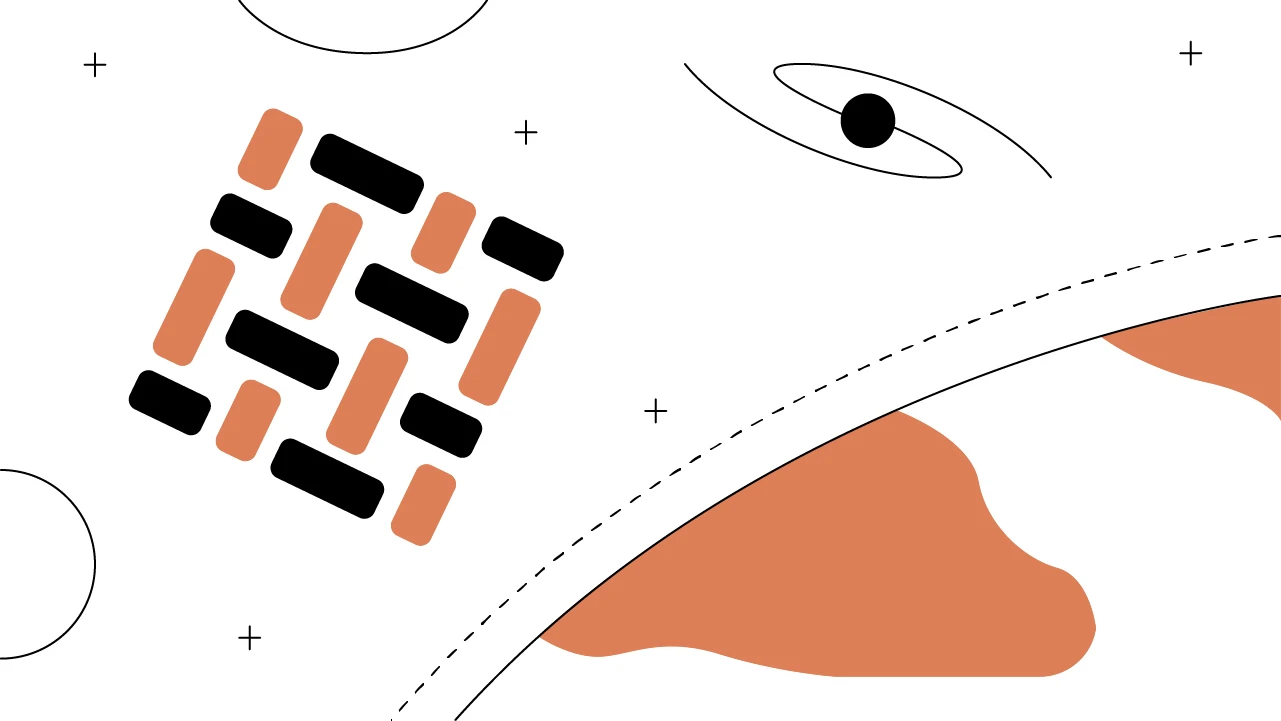Contents
Hedera Hashgraph (HBAR): A DLT Alternative to Blockchain
Hedera’s unique architecture and legacy-sanctioned business model could help create a counter to blockchain while building a bridge to tradition.
Updated February 22, 2022 • 4 min read

Summary
Hedera Hashgraph is an enterprise-focused public Distributed Ledger Technology (DLT) that utilizes a Directed Acyclic Graph (DAG) for its architecture instead of a blockchain. The project is governed by a council that includes global business leaders such as Boeing, Deutsche Telekom, and Google. Hedera Hashgraph is a DLT service provider with built-in centralized control levers and client optimization. It has proven attractive to enterprises seeking to harness some of the functionalities of blockchain technology without fully committing to decentralization. However, Hedera Hashgraph’s patented, for-profit gossip protocol, closed developer loop model, and limited decentralization have been criticized for a lack of transparency and equitability by some blockchain idealists.
HBAR and Hedera Hashgraph's DAG Architecture
One central difference between hashgraphs and blockchains is the way that they add transactions to their respective distributed ledgers. On a blockchain, blocks with records of transactions are added to the data-chain one after the other to create a history of the network’s data. If in the race to hash out a new block, two miners create blocks simultaneously, the blockchain will momentarily fork and the network’s nodes will choose to continue adding to the longest chain, abandoning the shorter chain. The sequential order must be maintained for the network to function.
Hashgraphs also package transactions into blocks, but unlike on a blockchain, all hashgraph blocks are added to the distributed ledger, regardless of their order or circumstance. Instead of a winner-takes-all race to confirm the blockchain data, hashgraphs are all used to create a more complete picture of the network’s transactional data. The resulting structure is called a Directed Acyclic Graph (DAG). One of the primary advantages of DAGs over blockchains is that they can reduce the data size per transaction, thereby lowering costs, increasing speed, and ultimately achieving higher levels of scalability.
The native cryptocurrency of the Hedera public network is the HBAR coin, which is used to furnish transactions on decentralized applications (dApps) and peer-to-peer payments, and also to protect the network from malicious actors through a staking mechanism similar to Proof of Stake (PoS). With its DAG model and HBAR coins, Hedera Hashgraph claims to be able to process 10,000 transactions per second with an average transaction fee of $0.0001.
Hedera Hashgraph’s Gossip Protocol
Hedera Hashgraph utilizes what’s called a gossip protocol to achieve consensus on network data. A gossip protocol sends transaction data to network nodes, which then come to consensus on transactions. Nodes continuously communicate all of the information they hold about transactions to other nodes at random, which allows transaction information to rapidly proliferate throughout the network. Every time two nodes sync — in what is called a “gossip sync” — each node marks the completion of the sync with an “event.” An event is a data structure that is stored in the network’s memory and comprises a timestamp, transactions, two hashes of the last of each node’s events, and a cryptographic signature. The history of events and corresponding hashes is called “gossip about gossip,” and it takes the form of a graph of hashes or a hashgraph — a type of DAG. Through gossip about gossip, nodes can determine where a transaction should be placed in the history of the ledger within seconds.
Benefits of Directed Acyclic Graphs
Unlike blockchain consensus algorithms, the hashgraph consensus algorithm is asynchronous Byzantine Fault Tolerant (aBFT), meaning that no single node or group of nodes can interfere with the consensus process or change the consensus once the network has arrived at it. Likewise, proponents argue that Hedera Hashgraph is more fair because no single node or miner is ever privileged with determining a transaction’s timestamp. Instead, Hedera Hashgraph calculates timestamps via automated voting such that consensus is collectively arrived at by all nodes. Because timestamps are determined in a fair way, the resulting order of transactions is also arguably fair.
Projects That Utilize Hedera Hashgraph
Examples of projects built on Hedera Hashgraph include a coupon tracking system created by The Coupon Bureau, a coupon industry non-profit organization; a platform that tracks and verifies advertising events and engagement created by AdsDax, a media advertising platform; and a distributed ledger for tracking the drug supply chain created by Acoer, a healthcare-focused software development firm. Additionally, Tata Communications, an Indian telecommunications company, is exploring the use of Hedera Hashgraph for secure user authentication and transaction logs, among other applications.
Criticisms of Hedera Hashgraph
Perhaps because of its unique approach, Hedera Hashgraph’s ability to verify the entirety of transactions executed on its network has come into question. Because of the lack of cryptographic block confirmation protocols, some critics believe that it is possible for bad actors to influence nodes to transmit false data, and that Hedera Hashgraph holds limited ability to identify and prevent such actions. Further, Hedera Hashgraph’s system currently does not have an active node reward system, which means there is no immediate incentive for nodes to behave honestly. This incomplete incentive alignment presents a risk vector not present in Ethereum or Bitcoin.
The blockchain space has been largely built upon the concept of decentralizing industries to increase access and equitability. The Hashgraph protocol is patented and is not available for public use or development. Swirlds, the company that owns Hedera Hashgraph, can change the protocol and the functionality of the entire network at any point at its own discretion. As a result, app builders and coin holders have limited leverage in terms of how the network operates.
Additionally, it is standard for the nodes on decentralized ledgers to be operated by volunteers, who in turn receive rewards for participating in the confirmation of new blocks to the ledger. This is a key incentive mechanism in decentralized models. While Hashgraph’s protocol also requires nodes, they can only be run by select organizations, most of which are large multinationals like LG, Google, IBM, and Boeing. These companies belong to an impressive roster of top-tier corporate players that have committed to working with Hedera to develop the platform.
But while the high level of buy-in from the private sector could potentially cement Hedera as a mainstream crypto platform, this approach may be problematic for idealistic cryptocurrency users intent on breaking away from traditional economic structures and paradigms.
Hedera Hashgraph represents more than just an innovative tech alternative to blockchain architecture. The team’s business model and track record are proving that there will be many sub-sectors of the burgeoning blockchain industry that serve vastly different needs — from hardline decentralized supercomputers to enterprise service providers. Hedera Hashgraph’s unique architecture and legacy-approved business model suggest that DAGs, gossip, and hashgraphs represent a distinct and potentially viable position in the broad spectrum of blockchain tech.
Cryptopedia does not guarantee the reliability of the Site content and shall not be held liable for any errors, omissions, or inaccuracies. The opinions and views expressed in any Cryptopedia article are solely those of the author(s) and do not reflect the opinions of Gemini or its management. The information provided on the Site is for informational purposes only, and it does not constitute an endorsement of any of the products and services discussed or investment, financial, or trading advice. A qualified professional should be consulted prior to making financial decisions. Please visit our Cryptopedia Site Policy to learn more.

Is this article helpful?


